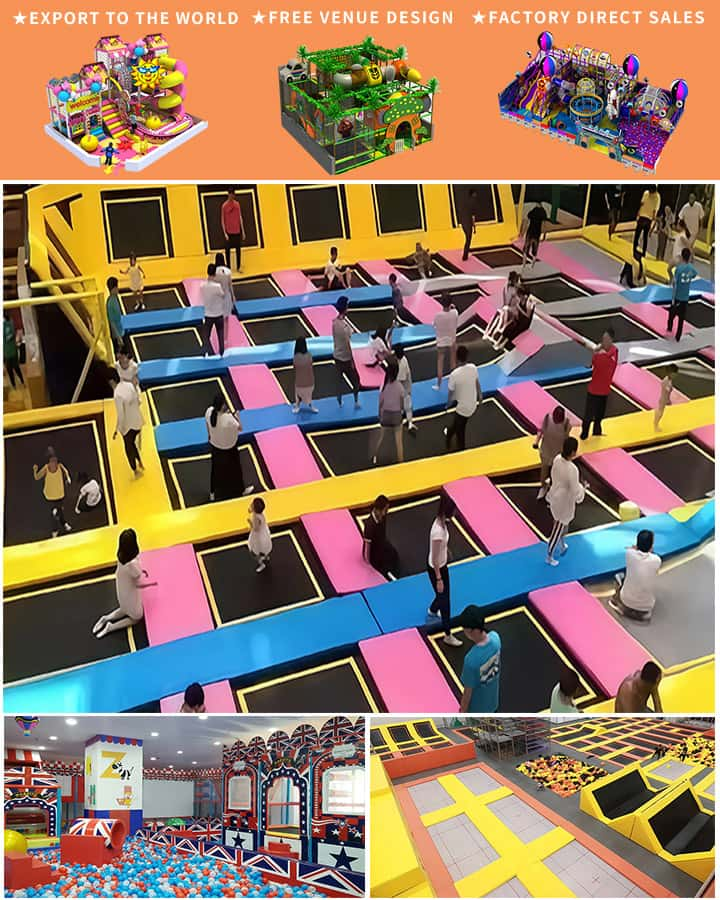Starting an indoor playground business can be a rewarding endeavor that offers immense satisfaction, not only through financial returns but also through the joy of creating a safe and entertaining space for children. This guide provides essential steps to launch a successful kids’ indoor playground business. By following these steps, you can set up an engaging, profitable, and well-managed venue that parents will trust and children will adore.
1. Conduct Market Research Before diving in, it’s vital to understand the market landscape. Identify your target demographic—age groups, location preferences, spending power, and interests of both children and their parents. Visit existing indoor playgrounds to get an idea of what works and what doesn’t. Engage with potential customers through surveys or social media polls to gauge interest and gather feedback on what they would like from a local indoor playground.
2. Choose the Right Location Location is crucial for the success of your indoor playground. Look for a space that is easily accessible, has high foot traffic, ample parking, and is situated in a family-friendly area. Consider the size of the venue, ensuring it is large enough to accommodate various play structures without feeling overcrowded. Proximity to schools, residential areas, and shopping centers can significantly impact the number of visitors.
3. Design a Safe and Engaging Space
Safety is paramount when designing an indoor playground. Use age-appropriate equipment made from non-toxic materials and ensure there are soft flooring options to prevent injuries. Create zones for different activities such as climbing walls, slides, ball pits, interactive games, and educational play areas. Bright colors, themed decorations, and sensory elements can make the space more appealing to children.

4. Obtain Necessary Permits and Insurance Ensure all legal requirements are met by obtaining the necessary permits and licenses. This may include business licenses, health and safety inspections, fire department approvals, and liability insurance. Liability insurance is especially important as it protects your business from potential lawsuits arising from accidents or injuries.
5. Invest in Quality Equipment The heart of any indoor playground is its equipment. Invest in high-quality, durable play structures that cater to various age groups and activity levels. Regular maintenance and safety checks should be conducted to ensure the equipment remains in top condition and safe for use.
6. Develop a Solid Business Plan A comprehensive business plan outlines your strategy for success. Include detailed market analysis, budgeting for startup costs, projected revenue, marketing strategies, staffing needs, and operational plans. A solid business plan not only guides your initial setup but also helps secure funding from investors or financial institutions.
7. Hire Qualified Staff Your staff can make or break the customer experience. Hiring friendly, reliable, and responsible employees ensures smooth operations and a welcoming environment. Staff should be trained in first aid, CPR, and child supervision techniques. Additionally, fostering a team culture that values customer service will contribute to repeat business.
8. Implement Effective Marketing Strategies Marketing is key to attracting customers. Utilize digital marketing tools such as social media, email newsletters, and online advertising. Create a website showcasing your facilities, services, and events. Partner with local schools, community centers, and parenting groups to promote your business. Offering introductory discounts or hosting open house events can also help draw in initial visitors.
9. Ensure Cleanliness and Maintenance Keeping the indoor playground clean and well-maintained is crucial for health and safety. Establish strict cleaning routines, especially after heavy usage periods. Regularly inspect and maintain equipment to avoid downtime and ensure a positive experience for every visitor.
10. Gather Feedback and Continuously Improve Finally, listen to your customers. Solicit feedback through surveys, suggestion boxes, or direct conversations. Use this information to make continuous improvements to your facility and services. Staying attuned to your customers’ needs and preferences will help retain them and attract new ones.
In conclusion, starting a kids’ indoor playground business involves careful planning, a focus on safety and quality, and effective marketing. By following these steps, you can create a thriving business that brings joy to children and success to you.




